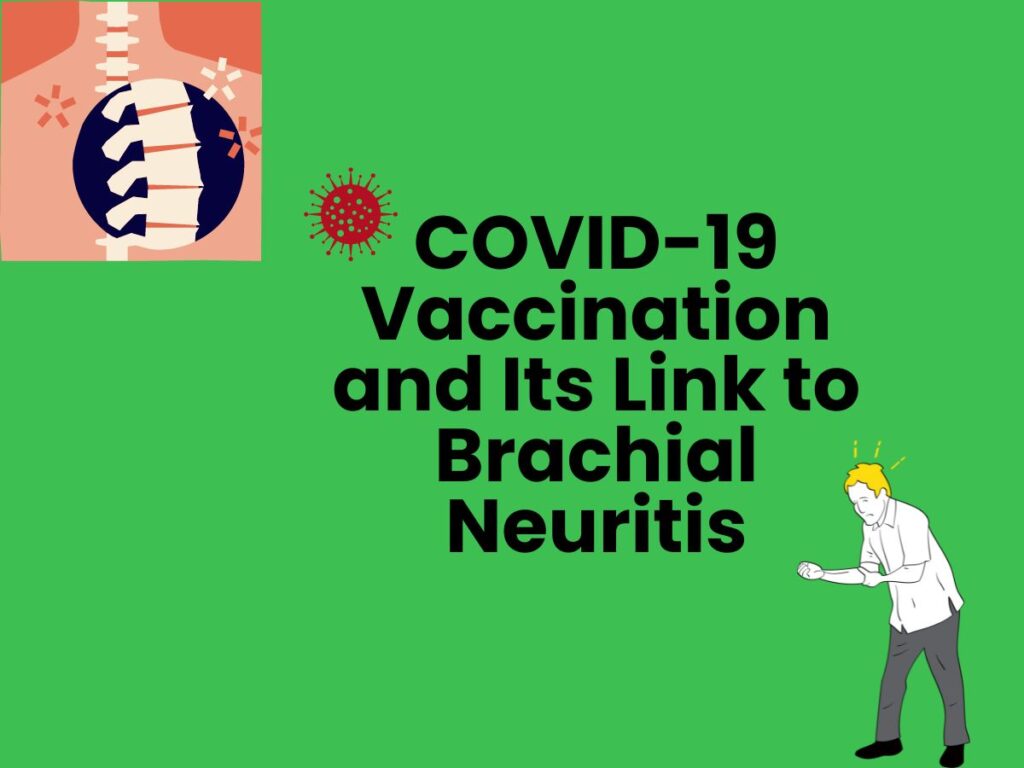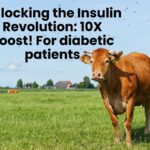Idiopathic brachial neuritis, as everyone hears these words, is known as Parsonage-Turner syndrome (PTS).”When considering the potential side effects of COVID-19 Vaccination and Its Link to Brachial Neuritis, it’s essential to understand the intricacies of this rare neurological disorder”. A mysterious and rare neurological disorder is a disorder defined as severe pain and paresthesia in the shoulder girdle and upper limb, followed by weakness in the affected area. It hurts a lot. There is no definitive cause defined for PTS, so misdiagnosis often occurs and treatment is delayed. Some people say that they have been facing many health problems for the last few years after covid-19.

Today there is concern about a possible link between Covid-19 vaccination and PTC because the problem can not be detected immediately. This article also provides information about PTC complications, how it is linked to COVID-19, early diagnosis and how to avoid this problem.
Let’s take a deeper look at “COVID-19 Vaccination and Its Link to Brachial Neuritis”.
Let’s explore Parsonage-Turner Syndrome (PTS).
What is PTS?
PTS is a rare and unique neurological condition. 1.6 to 3 people out of 100000 people are facing this problem every year.
first mentioned the definition in 1948 by Parsonage et al. PTS is also known worldwide as idiopathic brachial neuritis, acute brachial neuropathy or neuralgic myotrophy.
Symptoms of PTS.
It cannot be diagnosed quickly. It feels hard, severe pain, paresthesia, muscle weakness. That severe pain affects and hurts the shoulder girdle and upper limb Also shoulder loss rest.
These symptoms are not felt in the initial stages so you may experience them later. Brachial plexus leads to inflammation. It affects the nerves that control hand and arm movements.
Harmful factors and triggers
PTS triggers and leads to physical stress, drugs, infections, effects on the immune system.
trigger can damage the brachial plexus and affect the immune system.
By clinical presentation
PTS can happen to anyone. It starts with a sharp pain in the shoulder.
Over the course of several days to weeks, individuals with Parsonage-Turner Syndrome (PTS) experience the emergence of muscular weakness, alterations in reflex responses, and changes in sensory perception, predominantly impacting the muscles of the shoulder girdle and upper limbs.
How to diagnose Parsonage-Turner syndrome
Diagnosis of exclusion
Absolute reason about PTS is not available. The diagnosis of PTS hinges on a process of exclusion, primarily centered on clinical observations and the careful exclusion of alternative potential underlying causes.
Differential diagnoses including Pancoast tumor, thoracic outlet syndrome, and entrapment neuropathy should be considered and ruled out.
Diagnostic tools
Electromyograph and MRI tools are used for diagnosis. Nerve conduction studies help to know about PTS.
Presentation of the case
1. A Case Study
A 44-year-old male presented with severe, atraumatic left-sided chest wall pain radiating to the left shoulder and arm, with upper back involvement.
The pain began insidiously, worsened at night, and was unresponsive to over-the-counter pain relievers.
2. Extensive Medical Evaluation
Initial tests, including blood work, ECG, echocardiogram, and imaging, were conducted to rule out cardiac causes due to the left-sided chest pain.
The patient had received a fourth COVID-19 vaccination two weeks prior to the onset of symptoms, following three doses of Pfizer and one of Moderna.
2. Neurological Consultation
With cardiac and vascular conditions ruled out, a neurologist was consulted to assess the possibility of neuralgic pain.
Medications such as Amitriptyline, codeine, morphine, and ibuprofen were initiated, along with high-dose oral prednisolone while awaiting MRI results.
Organization linking Covid-19 vaccination and PTS–
Emerging concerns/worry
The onset of the COVID-19 pandemic spurred the initiation of global vaccination campaigns, positioning some countries as leaders in vaccine development, with a few even creating their own unique COVID-19 vaccines.
There have been reports of PTS occurring following COVID-19 vaccination, with approximately 42 documented cases at the time of writing.
Lack of Definitive Correlation
It remains challenging to establish a definitive correlation between the type, brand, or number of vaccine doses and the development of PTS.
More research is needed to better understand this potential link.
Managing Parsonage-Turner Syndrome:
Early Intervention is Key
PTS can lead to long-term disability, and early diagnosis is crucial for optimal management.
Brachial plexus MRI scans, nerve conduction studies, and electromyography can aid in diagnosis.
Treatment Options
While there are no randomized controlled trials, anecdotal evidence suggests that corticosteroids, when used early, may expedite the resolution of the painful phase.
Physiotherapy and neuropathic analgesic drugs may provide symptom relief.
Conclusion
Parsonage-Turner Syndrome is a rare and underdiagnosed neurological disorder with potentially debilitating consequences. While its exact cause remains unknown, there is emerging concern about its possible association with COVID-19 vaccination. Early diagnosis, thorough evaluation, and prompt treatment are essential to mitigate the impact of PTS on patients’ lives. As the world continues to combat the COVID-19 pandemic through vaccination efforts, understanding the potential risks associated with vaccines like PTS becomes increasingly important. Further research is needed to establish a conclusive link and develop effective prevention strategies. Healthcare professionals should remain vigilant in identifying and managing PTS, especially in patients with a recent history of vaccination.
Disclaimer
The above information is taken from various reliable resources and study reports. Many factors cause pain.









